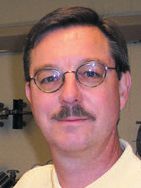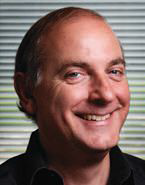Advancing our understanding
Drs. Wilfred T. Tysoe & Nicholas D. Spencer | TLT Cutting Edge August 2012
Discussions at a new symposium portray the depth and breadth of tribology research.

The Faraday Discussions were named after Michael Faraday, an 18th Century British scientist, chemist, physicist and philosopher. (Photo credit: Millikan and Gale’s Practical Physics)
THE DISCUSSIONS OF THE FARADAY SOCIETY are a firm fixture of the British chemistry landscape. These meetings typically deal with the interfaces of physical chemistry to other fields and have a unique format. Virtually all presented papers are written in advance and circulated to those planning to take part, who are expected to read them prior to the meeting.
During the meeting itself, authors have five minutes to refresh the memories of those present, after which 20 minutes or so of discussion can take place. After the meeting, the papers as well as transcripts of the ensuing discussions are published by the Royal Society of Chemistry.
Professor Rob Wood of the National Centre for Advanced Tribology at Southampton (nCATS) took the bold step of organizing Faraday Discussions 156 (the first on tribology) and invited a host of well-known tribologists covering the areas of biotribology, predictive modelling, smart surfaces and future lubrication systems. The quality of both talks and discussions was extremely high and illustrated the value of questioners having time to read papers carefully and think in advance.
Some papers were syntheses of previous work, such as the very useful and comprehensive contribution of Dr. Ian Taylor of Shell Global Solutions (UK) on tribology and energy efficiency. His paper focused on the impact of molecular structures of lubricant base oils and additives on friction reduction in machine elements and fuel consumption in vehicles. Professor Duncan Dowson of the University of Leeds (UK) started the meeting off with a fascinating survey of the breadth of biotribology.
Other authors dealt with modelling studies carried out with many different computational methods. In one paper, professor Pwt Evans of the University of Cardiff (UK) described new approaches to the prediction of fatigue failure in lubricated contacts. This work is of great importance to power-generation systems (i.e., wind turbines), where problems such as tooth breakage in gears are common. The approach involved constraining EHL calculations with contact mechanics using measured surface roughness profiles that could lead to the construction of a valuable predictive tool.
Dr. Werner Österle of the Federal Institute for Materials Research and Testing in Berlin, Germany, described his use of the Movable Cellular Autonoma technique to understand the roles of different components in brake linings in determining both the friction and structural changes in the contacting surfaces. Interestingly, the formation of a nanocrystalline layer, as previously discussed in this column1 in the context of molecular dynamics simulations, was predicted to occur when those combinations of components were present that appeared to lead to smooth braking.
Both fundamental and experimental tribology research was also presented at Faraday Discussions 156. Professor Liliane Léger of the Université Paris-Sud, France described how pillar-structured silicone rubber surfaces lead to higher contact-area-normalized friction than smooth ones, suggesting that the elastic energy stored in the pillars is released after contact, leading to a more effective dissipation process.
Professor Graham Leggett of the University of Sheffield (UK) showed how hydrogen-bonding interactions between liquids and surfaces can dramatically affect tip-sample interactions in tribological experiments carried out in the atomic force microscope, raising important questions about published results on the nanotribology of self-assembled monolayers under liquids.
The papers (and discussions) from Faraday Discussions 156 on tribology make for interesting reading and are available from the Royal Society of Chemistry
here.
REFERENCES
1.
Tysoe, W.T. and Spencer, N.D. (2008), “Analyzing High-Speed Sliding,” TLT,
64 (12) p. 56.
 Eddy Tysoe is a Distinguished Professor of Physical Chemistry at the University of Wisconsin-Milwaukee. You can reach him at wtt@uwm.edu
Eddy Tysoe is a Distinguished Professor of Physical Chemistry at the University of Wisconsin-Milwaukee. You can reach him at wtt@uwm.edu.
 Nic Spencer is professor of surface science and technology at the ETH Zurich, Switzerland. Both serve as editors-in-chief of STLE-affiliated Tribology Letters journal. You can reach him at nspencer@ethz.ch
Nic Spencer is professor of surface science and technology at the ETH Zurich, Switzerland. Both serve as editors-in-chief of STLE-affiliated Tribology Letters journal. You can reach him at nspencer@ethz.ch.